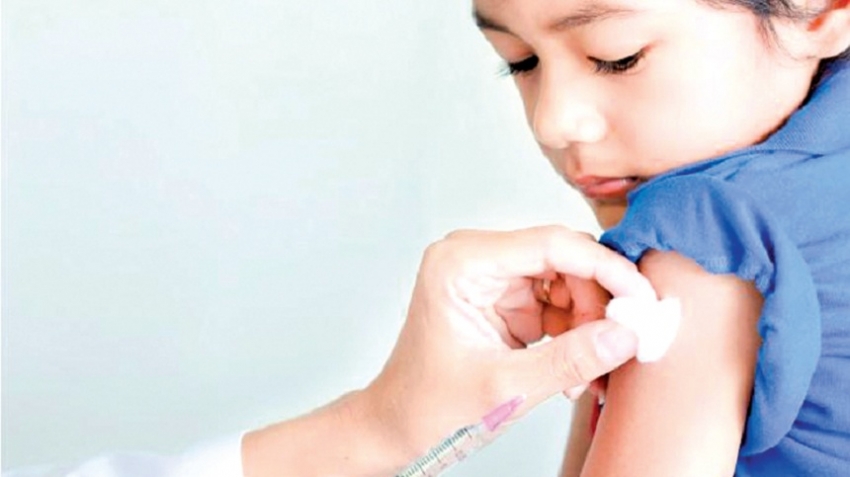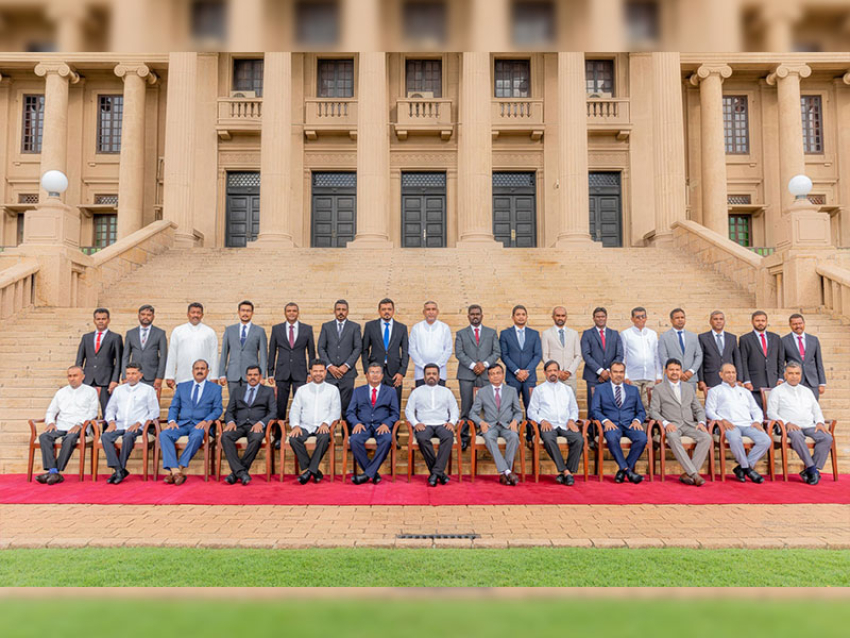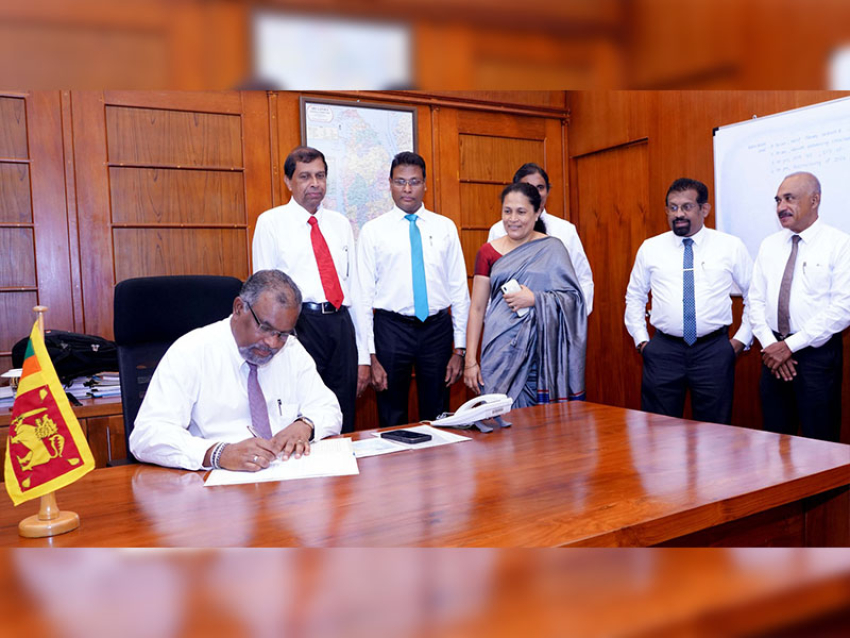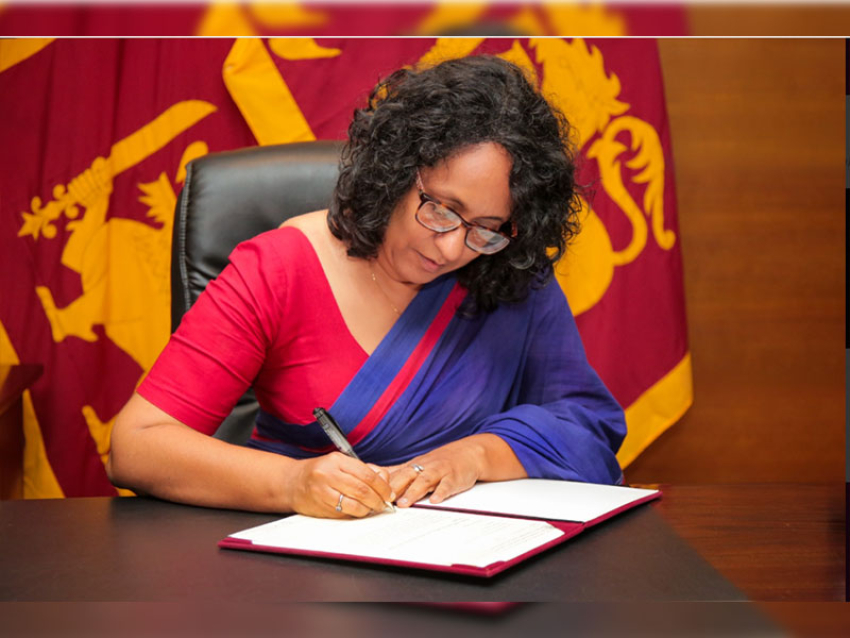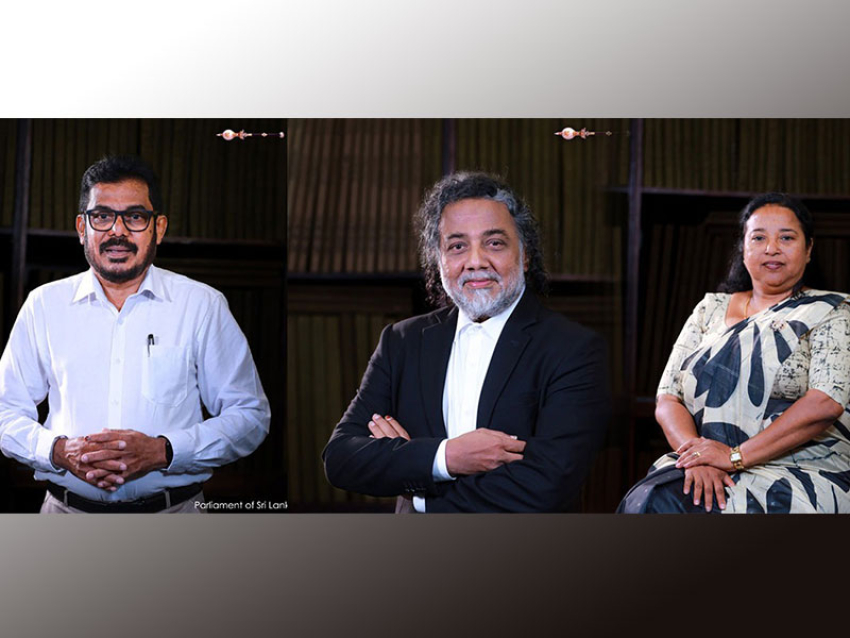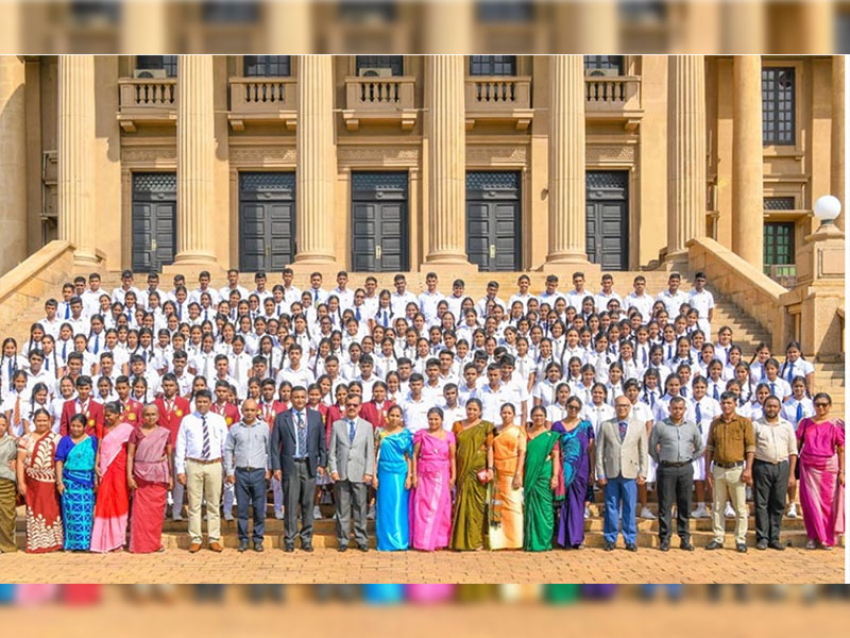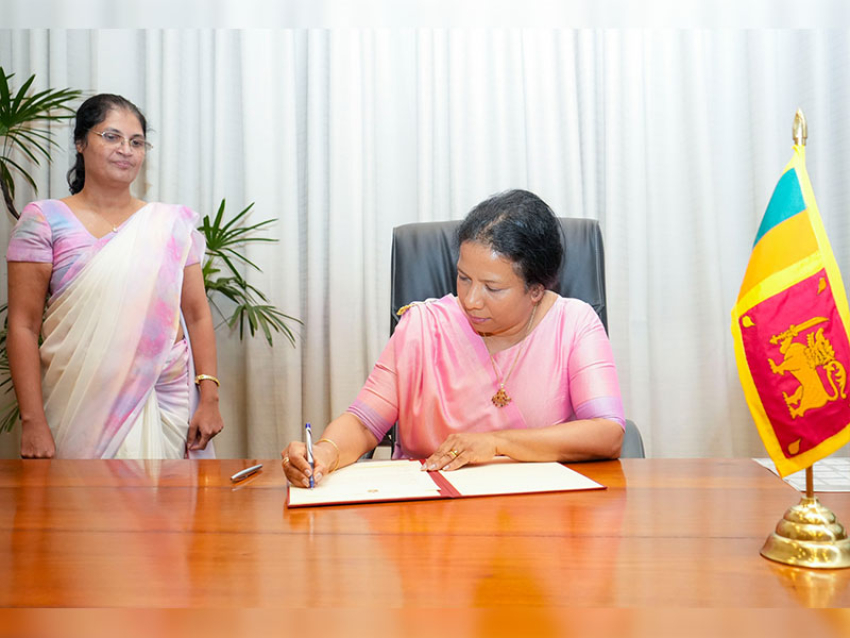There were some concerns regarding the alleged association of MMR vaccine with childhood autism sometime in the past. It is now firmly established on scientific evidence that there is no such link of MMR vaccine with autism Up to just about five decades ago it was not an uncommon occurrence to see our children fall victim to certain serious infectious diseases over which we had very little control. Illnesses such as tuberculosis, diphtheria, whooping cough, tetanus, polio, measles, mumps, rubella, chickenpox and typhoid were rampant and seemed to rule the roost.
There were regular mass epidemics of some of these nasty diseases which occurred with disconcerting regularity. Some of these diseases killed children while others left them severely disabled. A few of these diseases, there was no specific treatment either. In fact, just a few decades ago, the Lady Ridgeway Hospital, our premier medical institution for children, provided designated wards such as Diphtheria Ward and Polio Ward. These are things of the past now as a result of preventive measures such as immunisation, which to the public means, vaccinations.
The Health Ministry started an immunisation programme long years ago to control these diseases. However, initially, the general population viewed the entire enterprise with some suspicion and it took some time to build up confidence in the programme. Gradually people started to join in and vaccinate their children. With time, the programme evolved into the present-day Expanded Programme of Immunisation (EPI) of the Health Ministry.
The success of any preventive programme depends on the proportion of the vulnerable population that elects to join the programme. Today, we can boast of over 95 percent coverage of all children by the EPI. Parents have taken it to their hearts to immunise the children. This is truly a wonderful example of the successful implementation of a partnership programme between the government and the citizens of a country. Our EPI is today extolled by many authorities in the world, including the World Health Organisation, as a role model for most developing countries. The tremendous success of this programme has led to the virtual elimination of diseases such as diphtheria, whooping cough, tetanus, polio and measles from the country. The immunisations are recorded in a comprehensive booklet known as the Child Health Development Record (CHDR), which is issued free to every newborn baby by the Health Ministry. Vaccination is now well established as a vital cog in the wheel of successful childcare.
The National Programme of Immunisation starts with the BCG vaccination at birth. This vaccine works against tuberculosis, particularly the most severe types that affect the brain, joints, bones and kidneys. It is given as a simple injection into the skin of the left upper arm near the shoulder within the first 48 hours after birth. We have the great advantage of over 95 percent of births occurring in either public or private hospitals and thus administration of BCG to all these babies is that much easier. The vaccination site comes up like a bump within a couple of weeks and sometimes opens up as a shallow ulcer which heals leaving a scar. It is important to document the presence of a scar in the Immunisation Record component of the Child Health Development Record as this scar fades off with time in a small percentage of children. If the vaccine does not produce a scar, it should be repeated within the first six months of life.
The next set of vaccines to be administered are the triple, hepatitis B and polio vaccines. The first doses are administered at the age of two months. The triple vaccine covers the baby against diphtheria, whooping cough and tetanus. These are given by a single injection. So is the hepatitis B vaccine. The Health Ministry added the Haemophilus influenzae Type b (Hib) vaccine too some years ago. This bacterium causes rather severe infections of the brain, lung and ears. The polio vaccine is administered by mouth. All these vaccines have to be repeated again at ages 4, 6 and 18 months, to provide full protection for the baby. Diphtheria, tetanus and polio have been eradicated from the country as a result of these vaccinations.
Currently, a baby is administered the measles vaccine at nine months and the combined measles, mumps and rubella vaccine (MMR) at three years of age. These protect the child against these diseases which were the major causes of morbidity and some mortality in the past. Measles is a very rare disease now and rubella is well under control. Rubella, when transmitted to pregnant mothers, produces major congenital malformations in the unborn baby. In many countries, children getting rubella is a potential source of infection for other pregnant mothers as well and this is the main reason that the children are immunised against this disease.
There were some concerns regarding the alleged association of MMR vaccine with childhood autism sometime in the past. It is now firmly established on scientific evidence that there is no such link of MMR vaccine with autism. This vaccine has in fact been used in Sri Lanka for a number of years without any problem.
There is a vaccine that is administered at one year for the prevention of Japanese encephalitis, a type of brain fever. Currently, a live attenuated vaccine is used by the Health Ministry which provides adequate protection with just one dose. This is a significant advance in the development of immunisation in the country. Japanese encephalitis is a major problem which kills half of those who are affected and leaves a quarter with permanent brain damage. Booster doses of diphtheria, tetanus and oral polio vaccines are administered later at five-year intervals. The rationale behind these additional doses is to enhance the immunity and provide continuing protection for the child right up to adult life.
In addition to these vaccines which are provided free by the Health Ministry, there are optional vaccines which are currently available only in the private sector. Some of them are quite expensive, but these will provide additional protection against some other important diseases. There are vaccines against typhoid, hepatitis A, chickenpox, mumps, Japanese encephalitis, meningococcal disease and illnesses caused by pneumococci. Chickenpox is generally considered to be a customary disease or a part and parcel of childhood and does not cause serious problems in children in many cases. However, a child or an adolescent could get chickenpox at some of the most inconvenient times such as before examinations and prior to competitive sporting events. In children who have not had chickenpox, the vaccine is worthwhile but it has to be given well before contracting the disease.
It is essential that all these vaccines are transported and stored properly, as otherwise they lose their potency and effectiveness. The important constituent of this process is the maintenance of the proper ‘cold chain’. This refers to the exact low temperatures at which these vaccines have to be stored for the sustenance of the potency. The low temperatures at which they have to be stored are specified for each vaccine. In all institutions whether big or small, where vaccines are stored, stringent measures including back-up power supplies to refrigerators are essential to be instituted to address this issue even during power disruptions.
The Sri Lankan government spends a great deal of money and provides all vaccines in the Expanded National Immunisation Programme, to safeguard the health of our children. At the point of administration, these vaccinations are provided completely free to the people. Indeed, we are the envy of many countries in the world on the strength of our commitment to free healthcare.
However, there are minor problems, molehills blown out of all proportion and various types of undue publicity, regarding some of these vaccines, triggered by isolated untoward incidents that have occurred in some parts of the country as well as in other countries. Unfortunately, such sensation-seeking reports tend to jeopardise the very core of one of the most successful programmes in the annals of our National Health Service.
We have seen some horrendous suffering, deaths and long-term disabilities meted out by some of these diseases in the latter half of the last century. It seems to have been as distant as a very old bad dream now.
Nothing or no one should be allowed to torpedo and sabotage our very successful immunisation programme. There are all kinds of vaccine haters, pessimists, self-proclaimed ‘guardians’ of children, anti-vaxxers, certain religious sects, groups involved in ‘vaccine hesitancy’ and even anti-vaccination movements, that are hell-bent on opposing immunisation of children in many parts of the world. Some of them are very vocal and try ever so hard to paint a dismal picture of the unproven concerns regarding the safety of some vaccines.
As far as Sri Lanka goes, these nincompoops have either not seen or perhaps even been crass enough to forget the harrowing scenarios imposed on our motherland by some of these vaccine-preventable diseases in the not too distant past. Vaccinations have saved millions, maybe even billions, of lives, says Michael Kinch, Associate Vice Chancellor and Director of the Centre for Research Innovation in Business at Washington University in St. Louis.
Those routine shots every child is expected to get can fill parents with the hope that they are protecting their children from serious diseases.
In the long run, the successes achieved by the Sri Lankan EPI Programme are a testimony to the effectiveness, validity and veracity of the initiative. There is no other endeavour of any ministry of successive governments since independence that could boast of such spectacular results as those achieved by this programme. In fact, our country has been cited on numerous occasions by the global community, as a role model of successful immunisation.
Sri Lanka is a signatory to The International Children’s Charter and provision of good healthcare is a hallowed right of children as enshrined in that charter. The Expanded Programme of Immunisation is just one venture that was designed and initiated by the Health Ministry to honour that commitment to our children.
(Dr. B. J. C. Perera, MBBS(Cey), DCH(Cey), DCH(Eng), MD(Paed), MRCP(UK), FRCP(Edin), FRCP(Lon), FRCPCH(UK), FSLCPaed, FCCP, Hony FRCPCH(UK), Hony. FCGP(SL), is Specialist Consultant Paediatrician and Honorary Senior Fellow, Postgraduate Institute of Medicine, Colombo University; Joint Editor; Founder Chairman, Sri Lanka Forum of Medical Editors, 2016; Past President, Colombo Medical School Alumni Association (CoMSAA) – 2015; Past President, Sri Lanka Medical Association (SLMA) (2013); and Founder President, Sri Lanka College of Paediatricians (1996-1997))

